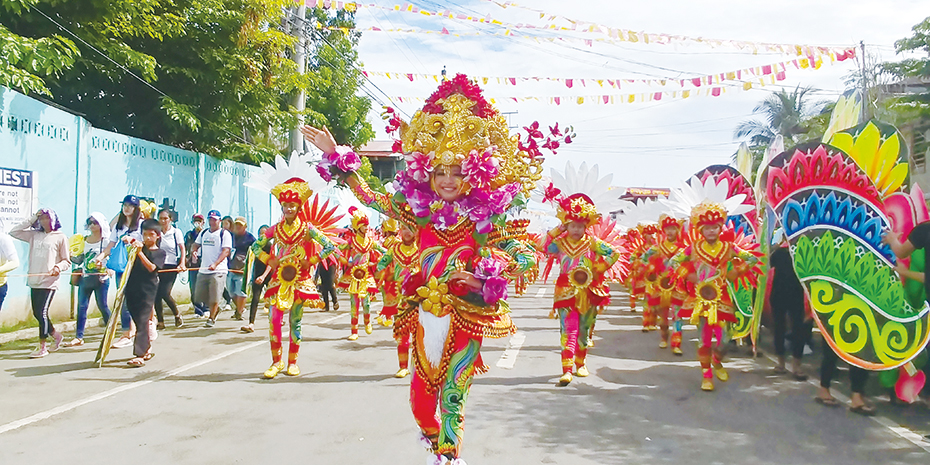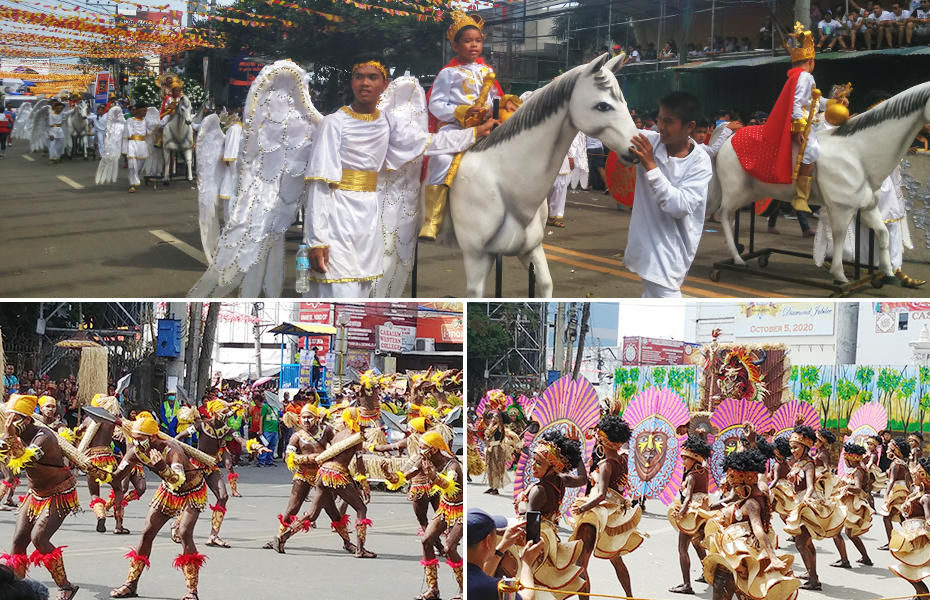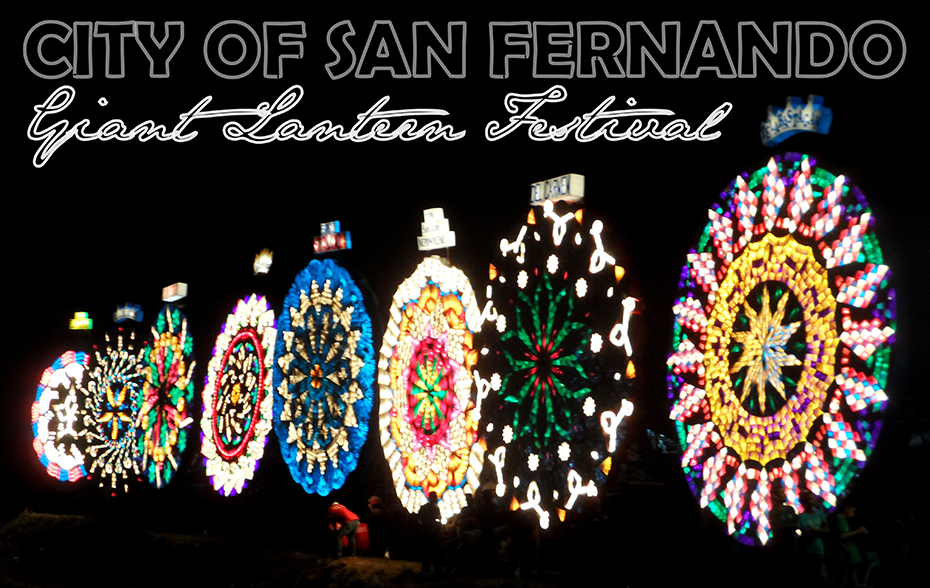This time, we met Kim Jung-hwan, a professor at Konkuk University, who has done extensive field research at around 200 Philippine festivals. He has also worked as judge at seven such festivals. Through the interview with Prof. Kim, we hope you will learn more about the Philippines, a country with a diverse culture and festivals as many as the number of its islands.
The Philippines is composed of 7,107 islands. It seems the country’s culture is as diverse as its many islands.
The Philippine is a multiㅡcultural country where people of different ethnic backgrounds live, including Chinese, Malay, Mestizo and others. They mainly live in three different areas; Luzon, located in the most northern area of Manila; Mindanao, located in the most southern area; and Visayas, located in the middle of the country. Most Chinese people live in the Luzon area, and the people who originated from Malaysia and Indonesia live in Mindanao. The official languages are Filipino and English, but over 70 native languages are also being used in the country. In the Philippines, you’ll find various cultures, ethnicities, languages, religions, etc. The people there do not reject these differences, however, but accept each other.
Throughout the year, there are numerous festivals in the Philippines, earning the country the name “the country of festivals.” What are some of the most significant ones?
There are at least 20,000 different festivals in the country. They can be categorized according to local traditions, specialties and religious meaning. All festivals have a different purpose, reflecting the culture of each region.
There is the ‘Ati-Atihan Festival’ in the Kalibo region that reflects the culture of Philippine minorities. ‘Ati’ refers to the Ati people, an ethnic group in the Visayas, the central portion of the Philippine archipelago. Participants in the festival wear black make-up, wear traditional clothes and dance with each other.

Baguio Panagbenga Festival

San Carlos Pintaflores Festival
There is also the ‘Panagbenga Festival,’ a flower festival in Baguio where the Ifugao people perform traditional dances and music, and the ‘Pintaflores Festival’ in San Carlos. This festival is combined with the ‘Nabingkalan Tattoo Festival’ and the ‘Dance of Flowers,’ featuring an ancient warrior, called ‘Pintados,’ who adorns himself with a gorgeous tattoo.

[L] Bacolod MassKara Festival [R] Alegria Kawayan Festival
In October, the ‘MassKara Festival’ is held in Bacolod, and in November, the ‘Kawayan Festival,’ a traditional cultural art festival, is held in Alegria, Cebu. At the latter, people play bamboo instruments and perform dances.
The Philippines were under Spanish colonial rule. It seems that some of the festivals reflect this part of the country’s history. Could you introduce some of the festivals to us that originated from Spanish cultural or religious traditions?

[T] Cebu Sinulog Festival [B] Iloilo Dinagyang Festival
Due to the Spanish colonial rule, 83% of the population is Catholic. Therefore, many Catholic ceremonies are held between January and February. There are many ‘Santo Nino’ festivals, which celebrate Baby Jesus. The most famous of these festivals is the ‘Sinulog Festival’ in Cebu. The Dinagyang Festival, which also celebrates Baby Jesus, is held in Iloilo.

San Fernando Giant Lantern Festival
In December, there is the ‘Giant Lantern Festival’ in San Fernando, Pampanga Province, which celebrates Christmas Day. The handcraft lanterns used as decoration during the festival are made in towns throughout Pampanga. There is also a competition to decide who created the most beautiful lantern. Other festivals are dedicated to Spanish foods. For instance, a famous Spanish style sausage, called Longganisa, is made with garlic, a specialty of the city of Vigan.
In your opinion, which part of Philippine culture is particularly worth protecting?
A few days ago, I conducted field research at the ‘Kadayawan Festival,’ held in the city of Davao on the island of Mindanao. At this festival, a game was played that is called ‘Dula Kadayawan.’ ‘Dula’ means traditional folk game. It is similar to the Korean game ‘Jegichagi’, where ps kick a shuttlecock to keep it in the air. Representatives of each town gathered to play this game together.

Davao Kadayawan Festival
Before the game, they held a religious ceremony called ‘Manok.’ Originally, ‘Manok’ means chicken, because the chief priest in the ceremony cuts the belly of a chicken to give a burnt offering. Both ‘Dula’ and ‘Manok’ are part of traditional Philippine culture that lives on to this day. I hope they will continue protecting these traditions.
In celebration of the 70th anniversary of the establishment of Korean-Philippine diplomatic relations, the two countries declared 2019 the “Year of Mutual Exchanges between the Philippines and the Republic of Korea.” What view should they have of each other?
Firstly, we should not talk about right and wrong when it comes to culture but respect and accept each other. Philippine people sincerely value ‘hiya,’ which means decency. They are paying more attention to what others think rather than just thinking they are right. Therefore, they often smile and say ‘yes’ even if they might not like or agree with something. More often than not, this can cause inconveniences. On the other hand, Philippine people do not understand why South Korean people speak so loudly. It’s a typical case of cultural differences. Therefore, I believe that if they try and accept each other’s culture, they will be able to better understand each other.
What plans do you have for your time in the Philippines?
Many Koreans come to the Philippines to learn English. However, I often thought that I would like to teach Korean to locals here. In order to do this, I suggested creating Korean language courses at a university. The university considered my proposal positively, and two years later, I will teach the Korean language and culture at that university. Along with this work, I will keep conducting field research regarding traditional Philippine culture and festivals.
Finally, do you have anything else you’d like to say about the Philippines for the ACH Newsletter?
I hope people’s perspective about the Philippines will change a bit. The Philippines are a country with great potential due to its abundant human and material resources. It is also the country that deployed the third-largest contingent of soldiers during the Korean War. They’ve also provided food aid for us in the form of rice. Unfortunately, it seems that many have already forgotten about this.
I think people need to think about the Philippines as an equal to South Korea. If we strive to better understand their culture and lifestyle, an amicable and stronger relationship will develop.
 KOREA FOUNDATION
KOREA FOUNDATION










